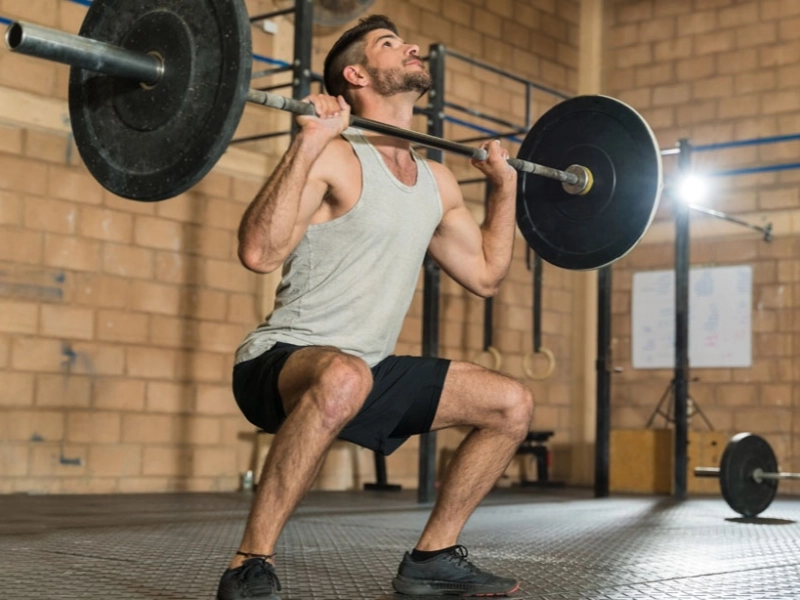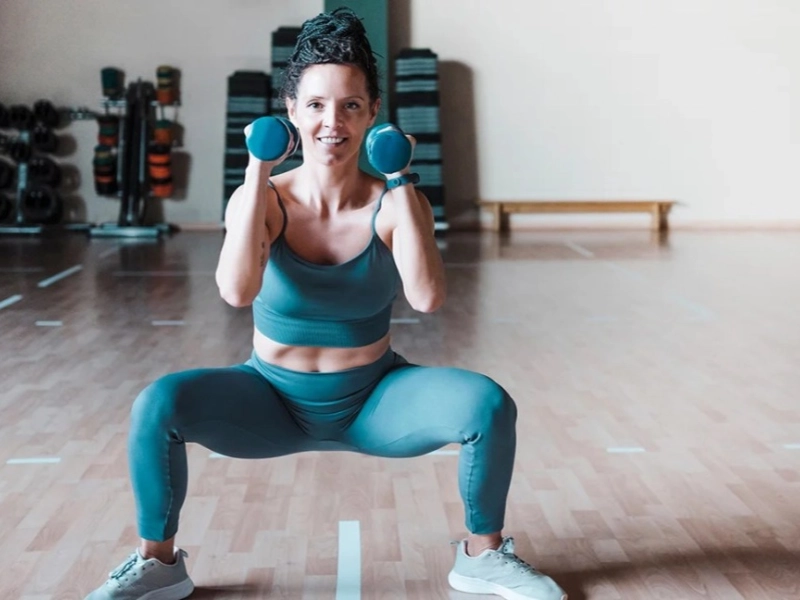Muscles that have been strengthened through strength training may withstand higher loads before failing. This helps reduce the risk of injury, particularly when combined with climbing. But it's crucial to avoid doing too much weight training. Large arms are an annoyance on a rock wall, and bulging muscle mass can hinder climbing effectiveness.

 Any climbing training programme must include lifting, but it must be done carefully and with the proper balance. The correct quantity of lifting can help prevent joint and tendon problems, which frequently shorten the climbing season, and will also assist develop the muscle strength required for dynamic manoeuvres.
It is best to focus your lifting efforts on the muscles involved in the most dynamic climbing motions. Exercises like pull-ups, squats, and deadlifts are common. The lats are a crucial muscle group that need to be strengthened in order to facilitate arm movement. To work on these muscles, try doing some assisted pull-ups or utilising a bar with a wide grip.
Regarding "heavy," that depends on how much experience you have. It's not required to compete with elite powerlifters, and it's certainly not necessary to max out on air squats. Just concentrate on performing the activities that are most pertinent to climbing, and pay attention to your recuperation in between sessions.
Any climbing training programme must include lifting, but it must be done carefully and with the proper balance. The correct quantity of lifting can help prevent joint and tendon problems, which frequently shorten the climbing season, and will also assist develop the muscle strength required for dynamic manoeuvres.
It is best to focus your lifting efforts on the muscles involved in the most dynamic climbing motions. Exercises like pull-ups, squats, and deadlifts are common. The lats are a crucial muscle group that need to be strengthened in order to facilitate arm movement. To work on these muscles, try doing some assisted pull-ups or utilising a bar with a wide grip.
Regarding "heavy," that depends on how much experience you have. It's not required to compete with elite powerlifters, and it's certainly not necessary to max out on air squats. Just concentrate on performing the activities that are most pertinent to climbing, and pay attention to your recuperation in between sessions.
 Following your ascent, concentrate on keeping your general strength up by doing a variety of upper and lower body workouts. Weighted stretches and quick, intense sets of appropriate lifting exercises are two examples of this.
In this phase, you should also try to minimise weariness particular to climbing by eating simple carbs and protein. According to Eric Horst in his book Training for Climbing, combining these nutrients maximises glycogen resynthesis and expedites recovery.
If you have an injury unique to climbing, your primary focus should be on cross-training until the injury heals completely (provided it doesn't worsen). Running is a very effective total-body exercise that enhances cardiovascular health and can be performed virtually anyplace. It's a fantastic substitute for cycling and frequently takes a lot less time. Additionally, you want to think about implementing some circuit training and general strength training sessions within the multi-gym.
Following your ascent, concentrate on keeping your general strength up by doing a variety of upper and lower body workouts. Weighted stretches and quick, intense sets of appropriate lifting exercises are two examples of this.
In this phase, you should also try to minimise weariness particular to climbing by eating simple carbs and protein. According to Eric Horst in his book Training for Climbing, combining these nutrients maximises glycogen resynthesis and expedites recovery.
If you have an injury unique to climbing, your primary focus should be on cross-training until the injury heals completely (provided it doesn't worsen). Running is a very effective total-body exercise that enhances cardiovascular health and can be performed virtually anyplace. It's a fantastic substitute for cycling and frequently takes a lot less time. Additionally, you want to think about implementing some circuit training and general strength training sessions within the multi-gym.
 Climbing is a distinct sport that occasionally calls for the body to move in particular ways. To perform, considerable power and endurance training is also necessary. There are numerous structured climbing plans available, and they typically consist of five distinct phases: performance, low-intensity endurance, power, strength, and power endurance.
Building finger strength should be the primary priority for novice climbers. To do this, one must ascend a range of terrain and climbing techniques, including slabs, overhangs, and comp style problems. This will truly assist novices in developing a solid skill base that will enable them to advance.
Climbers who are just starting out should also experiment with different grips. Their grip strength will grow as a result. In order to avoid damage, kids should also make sure to stretch and warm up before climbing. It's also critical for novice climbers to be aware of other climbers. Keep an eye on their work and, if necessary, raise questions. They will be able to learn from the greatest as a result.
Climbing is a distinct sport that occasionally calls for the body to move in particular ways. To perform, considerable power and endurance training is also necessary. There are numerous structured climbing plans available, and they typically consist of five distinct phases: performance, low-intensity endurance, power, strength, and power endurance.
Building finger strength should be the primary priority for novice climbers. To do this, one must ascend a range of terrain and climbing techniques, including slabs, overhangs, and comp style problems. This will truly assist novices in developing a solid skill base that will enable them to advance.
Climbers who are just starting out should also experiment with different grips. Their grip strength will grow as a result. In order to avoid damage, kids should also make sure to stretch and warm up before climbing. It's also critical for novice climbers to be aware of other climbers. Keep an eye on their work and, if necessary, raise questions. They will be able to learn from the greatest as a result.